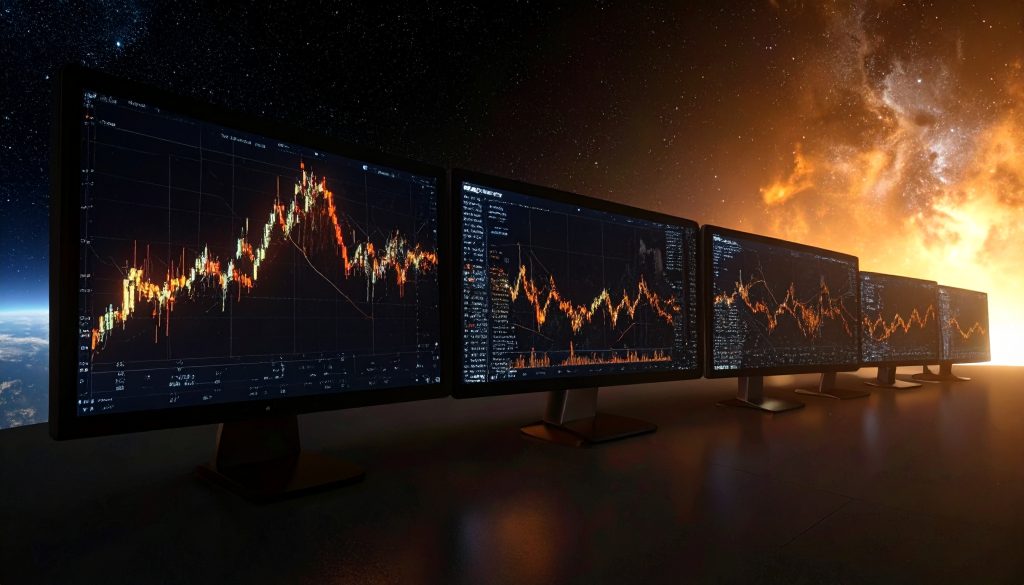Starting your Forex trade for beginners journey can feel overwhelming—but it doesn’t have to be. Opening your first trade in the Forex market is a big milestone. But it’s not just about clicking “buy” or “sell.” To trade effectively, you need to understand how orders work, how much to trade, and how to manage risk smartly—right from the start.
This guide is designed to walk you through the entire Forex trade for beginners process, step by step, using practical logic—not hype.
1. Market vs. Pending Orders: Know What You’re Doing
A key concept in any Forex trade for beginners is knowing how to enter the market.
Market Order
You buy or sell immediately at the current price.
When to use it:
- You want instant entry.
- You’re trading during high liquidity.
- You’ve done your analysis and don’t want to miss the move.
Pending Orders
These are future instructions, waiting for a certain price level.
| Order Type | Use Case |
| Buy Limit | Buy lower than current price (catch a pullback) |
| Sell Limit | Sell higher than current price (resistance fade) |
| Buy Stop | Buy above current price (breakout confirmation) |
| Sell Stop | Sell below current price (breakdown confirmation) |
Pro Tip: Using pending orders is a great tool in a Forex trade for beginners strategy to avoid emotional trading.
2. Position Size: How Much Should You Trade?
Choosing how big your trade should be is not about how confident you feel—it’s about how much you can afford to lose. A common mistake in Forex trade for beginners is trading too big. Your lot size should match your risk tolerance. This is where lot sizes come in.
| Lot Type | Units | Pip Value (EUR/USD) | For Account Size |
| Standard Lot | 100,000 | ~$10 per pip | $10,000+ |
| Mini Lot | 10,000 | ~$1 per pip | $1,000–$5,000 |
| Micro Lot | 1,000 | ~$0.10 per pip | $100–$1,000 |
| Nano Lot | 100 | ~$0.01 per pip | <$100 (less common brokers) |
If you’re just starting out with a Forex trade for beginners, micro lots are ideal.
3. How to Set a Stop-Loss and Take-Profit Like a Pro
In any Forex trade for beginners, setting a stop-loss (SL) and take-profit (TP) is essential. Every trade should have two exit plans:
- One if you’re wrong (stop-loss)
- One if you’re right (take-profit)
Stop-Loss (SL)
Limits your loss by automatically closing the trade at a predefined price.
Example:
You buy EUR/USD at 1.1000.
You set your SL at 1.0970 → You risk 30 pips.
Take-Profit (TP)
Locks in your profits once the price reaches a target.
Example:
You set TP at 1.1060 → 60 pips of potential gain.
Use a risk-to-reward ratio of at least 1:2. If you’re risking 30 pips, aim to gain at least 60.
4. The 1% Rule: Don’t Blow Your Account
Every successful Forex trade for beginners plan includes strict risk management: A golden rule of smart trading is:
Never risk more than 1–2% of your account per trade.
| Account Size | Max Risk (1%) | If Stop-Loss is 50 pips | Lot Size to Use |
| $1,000 | $10 | $0.20/pip → 0.02 lot (micro) | 0.02 |
| $500 | $5 | $0.10/pip → 0.01 lot (micro) | 0.01 |
Proper position sizing protects you from emotional decisions and drawdowns.
5. Executing the Trade (Step-by-Step)
Here’s how a Forex trade for beginners might look on MetaTrader 4 or a similar platform:
- Choose your pair (e.g., EUR/USD)
- Click “New Order”
- Set your volume (lot size)
- Choose Market Execution or Pending Order
- Add your stop-loss and take-profit
- Click Buy or Sell
- Monitor the trade or set alerts
Don’t stare at charts endlessly. Let SL/TP handle exits.
6. When and What to Trade as a Beginner
Not all pairs are beginner-friendly. In your first Forex trade for beginners, stick to major pairs:
- EUR/USD
- GBP/USD
- USD/JPY
These pairs have tight spreads, high liquidity, and less erratic behavior.
Best times to trade:
| Session | GMT Hours | Notes |
| London–New York Overlap | 13:00–17:00 | Most active, best spreads, strong trends |
| Tokyo Session | 00:00–09:00 | Best for JPY pairs, slower movement |
- Mistakes to Avoid on Your First Trades
In your Forex trade for beginners journey, watch out for:
| Mistake | Better Approach |
| Trading without stop-loss | Always define your risk before entry |
| Using high leverage (e.g. 1:500) | Stick to 1:30 or lower when starting out |
| Risking more than 2% per trade | Use a calculator and follow the 1% rule |
| Trading random pairs or news spikes | Start with majors and avoid trading news |
| Entering without a plan | Define entry, SL, TP, and risk before clicking |
Final Thoughts
Your first Forex trade for beginners is just the beginning—but it sets the tone. Focus on capital protection, not quick profits. Use a journal to track your trades, and always follow your plan.
Remember:
- Focus on risk, not reward
- Trade small until you’re consistent
- Use stop-loss and take-profit on every single trade
- Keep a journal to review and improve
In the next article, we’ll help you build your first basic trading strategy—so you’re not just placing trades, but placing trades with purpose.
FAQ: Placing Your First Forex Trade
1. What’s the difference between a market order and a pending order?
Use a market order on a major pair with a clear SL/TP. It’s a simple way to begin your Forex trade for beginners journey. A market order executes immediately at the current price. A pending order executes later, only if the price reaches a level you’ve defined. Pending orders help you plan trades in advance and remove emotional decision-making.
2. What’s the safest lot size for a beginner?
Most beginners should start with micro lots (1,000 units). Each pip is worth about $0.10, allowing you to manage risk and build confidence without risking too much money.
3. Do I always need a stop-loss and take-profit?
Yes. A stop-loss protects your capital from unexpected moves, while a take-profit locks in gains. Even if you’re watching the chart, using both helps maintain discipline and avoid emotional exits.
4. How do I calculate the right position size?
Use the 1% rule: never risk more than 1% of your total account on a single trade. For example, if your stop-loss is 50 pips and you have $1,000, your trade size should be 0.02 lots (risking ~$10 max).
5. What happens if I don’t use a stop-loss?
Without a stop-loss, a trade could keep going against you—possibly wiping out your entire account. This is one of the most common reasons beginners lose money.
6. Can I trade during news events for quick profits?
Technically yes, but it’s not recommended for beginners. News releases often cause spikes, slippage, and spread widening, which can hit your stop-loss or result in poor execution. It’s safer to wait until the volatility calms down.
7. What currency pairs should I trade first?
Stick to major pairs like EUR/USD, GBP/USD, or USD/JPY. These pairs have the most liquidity, tighter spreads, and fewer wild price swings—making them ideal for beginners.
8. What’s a good risk-to-reward ratio for beginners?
Start with 1:2. That means for every $1 you risk, aim to make $2. This helps you stay profitable even if you lose more trades than you win.
9. How long should I stay in a trade?
It depends on your strategy. If you’re day trading, you might close within hours. If you’re swing trading, you might hold for days. Let your stop-loss and take-profit define your time horizon—not your emotions.
10. Should I use high leverage to make more money faster?
No. High leverage (like 1:500) increases the risk of blowing your account. As a beginner, stick to low to moderate leverage (e.g., 1:10 to 1:30) until you fully understand risk management.





The use of offensive and immoral words and content in any form and by any person is prohibited.
Publishing any non-economic views, promoting the site, promoting social network pages, including contact information and unrelated links is not allowed.
Comments that violate the above rules will not be approved.